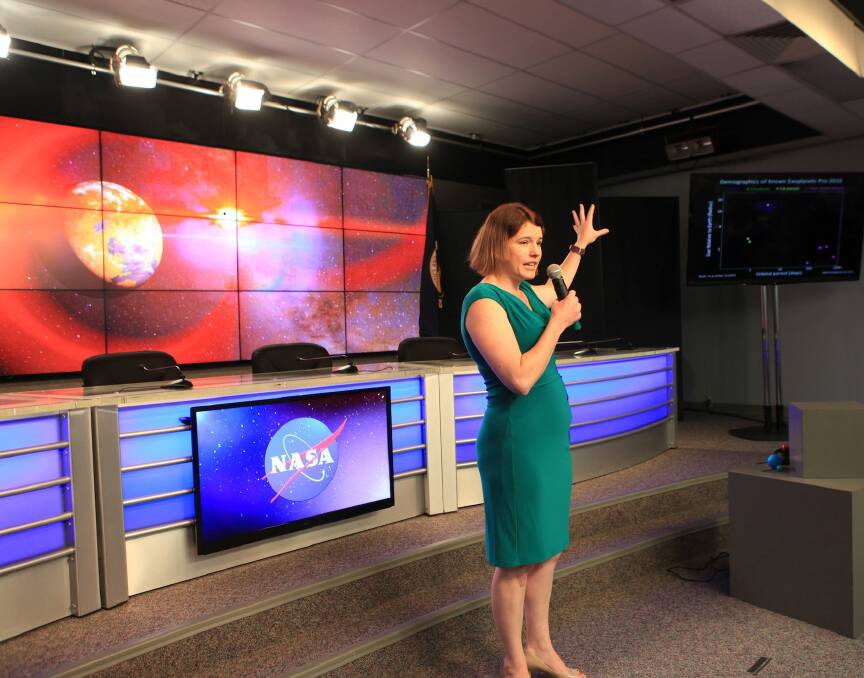
Dr Jessie Christiansen is Australia’s own planet hunter; looking for, studying and cataloguing extrasolar planets that orbit other stars.
Subscribe now for unlimited access.
$0/
(min cost $0)
or signup to continue reading
It’s a quest that could one day discover a habitable world in another solar system and help answer the burning question of whether there is life elsewhere in space.
Dr Christiansen will visit Ballarat on Tuesday as part of National Science Week to talk to students at Loreto College and Mount Pleasant Primary Schools about her work and the likelihood of alien life.
“We will examine some of the more incredibly unexpected planets that populate our galaxy, and we will look forward to some possible surprises the universe has in store for us,” she said of her talk.
Having worked on the NASA Kepler mission to determine how common Earth-like planets might be in our galaxy, she has now moved on to the Transiting Exoplanet Survey Satellite (TESS) which will search the entire sky to discover even more planets beyond our solar system, and identify which of these planets are close enough to be worth further study and analysis.
“Everything we have found out there in the universe is always stranger than we imagine,” she said.
“I look for planets around other stars, and people have been imagining what planets around other stars might look like for decades and centuries in movies, on television and in stories. We didn’t really have anything to base it on other than our own solar system, but some of the planets we have found are even more crazy than we imagine.
“We even found a Tatooine-like planet around two stars like George Lucas imagined in Star Wars.
“Ultimately we are looking for habitable worlds,” she said.
Dubbed the “tomb raider of exoplanet research”, Dr Christiansen fell in to astronomy after her poor eyesight stole her childhood dream of becoming a fighter pilot. It was news she received just a month before finishing year 12 and prompted a rethink of her future.
“I signed up for a degree in biotechnology, and six months in to that degree I knew I didn’t want to do it, but once I was at university I realised astronomy was a job you could get paid to do. I had no idea you could get paid to look at the sky,” she said.
While no universities at the time offered astronomy degrees, she completed a physics and maths degree and then did her PhD at the University of NSW. After finishing that she moved to the US and worked at Harvard on a NASA project before joining the iconic space agency to work on the Kepler and TESS missions.
Dr Christiansen also wants her audience, particularly girls, to consider a career in science.
“One of the things I want to speak to girls about is it’s difficult when you don’t see role models that look like you doing what you want to do. When I was young there weren’t successful women visible in natural sciences, astronauts, engineers … it was mostly male scientists you heard about.
“But I can be that visible role model and they should be in sciences making exciting discoveries.”
Have you signed up to The Courier's daily newsletter and breaking news emails? You can register below and make sure you are up to date with everything that's happening in Ballarat

